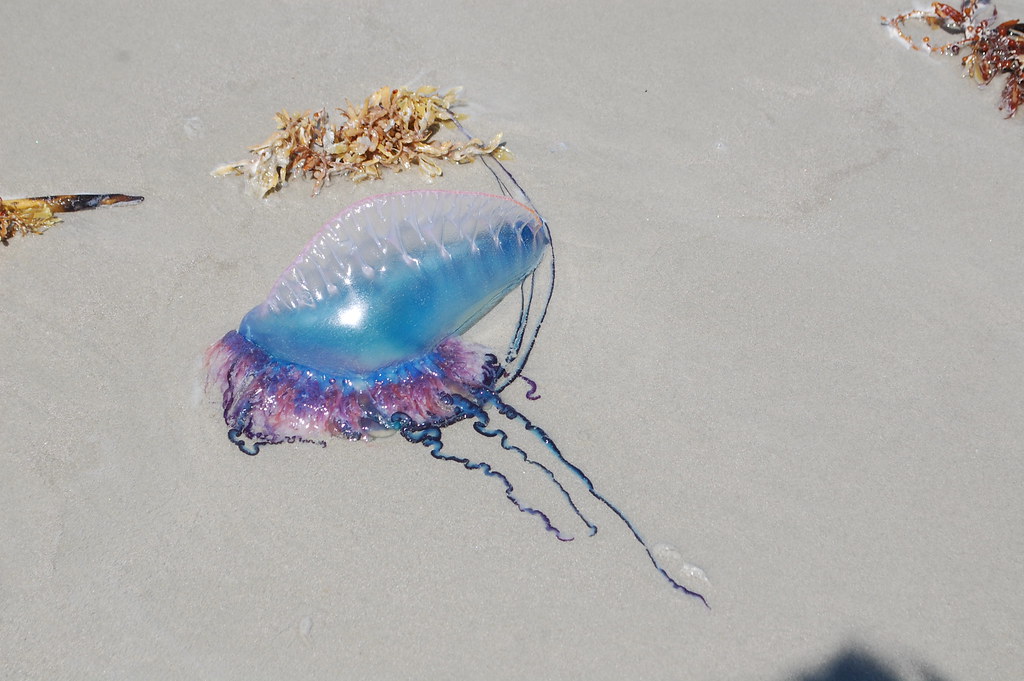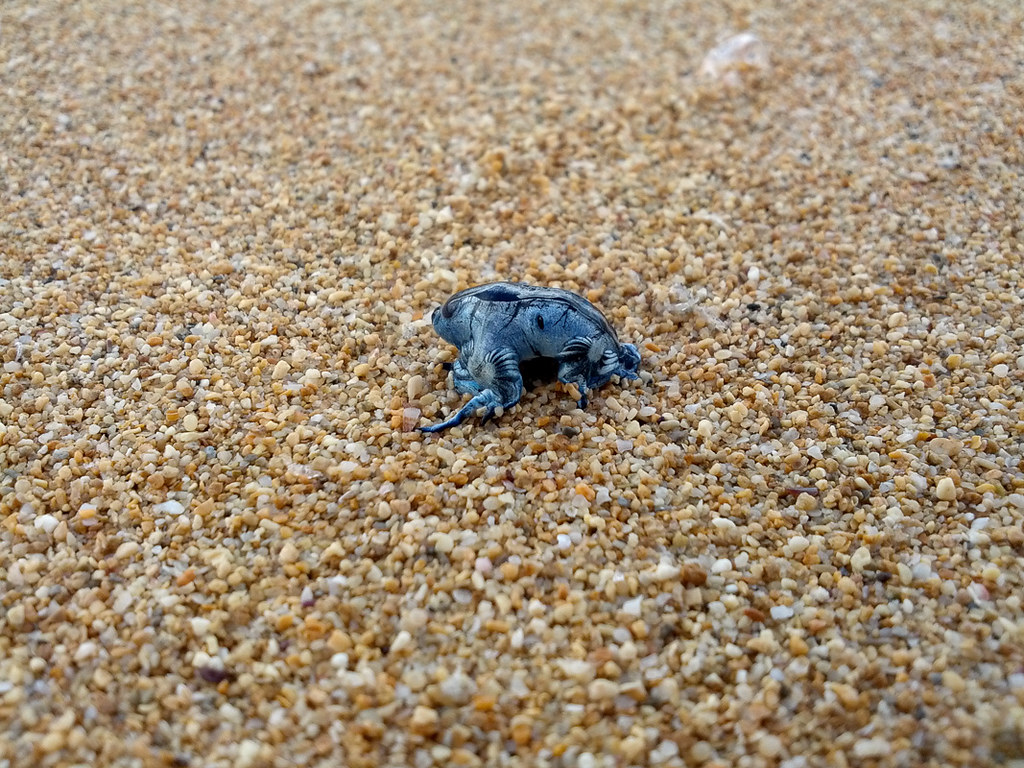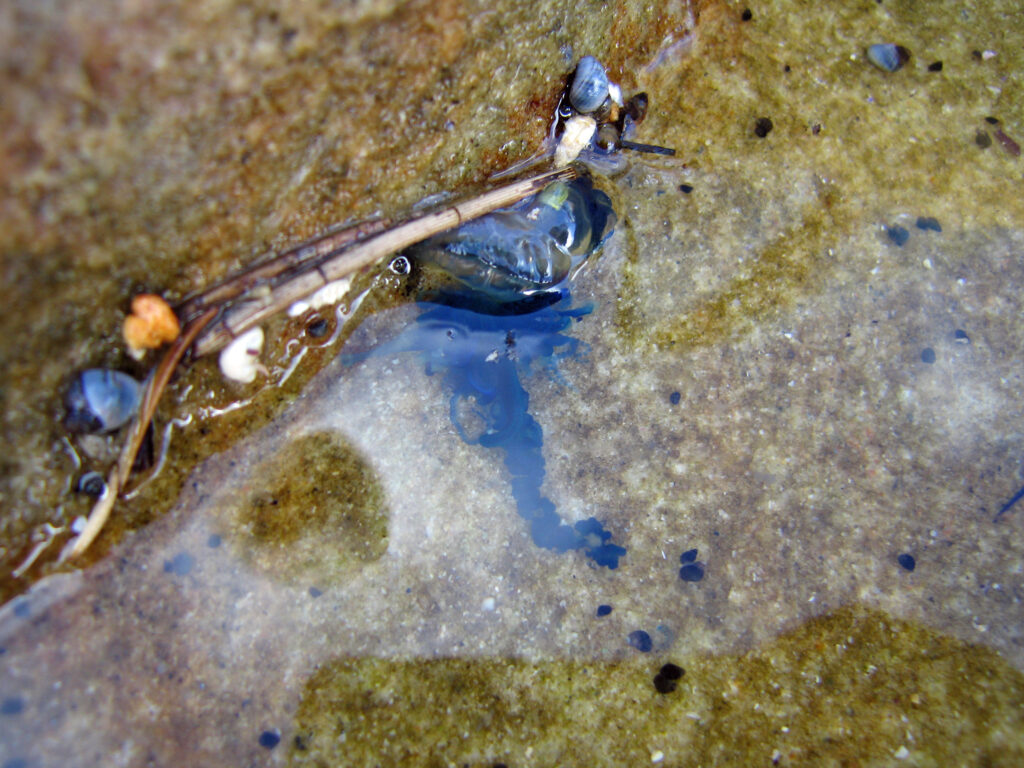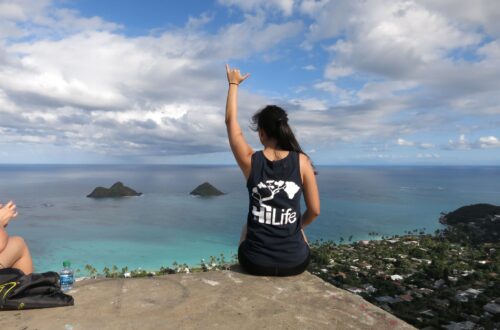
Know Before You Go: Portuguese Man O War
Jellyfish that can be seen on Oahu are the Box Jellyfish, Moon Jellyfish, and Lagoon Jellyfish. However, another dangerous “jellyfish” found in Oahu’s oceans are the Portuguese Man O War. (Fun fact: they aren’t actually a jellyfish, but rather a colony of organisms working together). You may have seen them as blue polyps washed up on the shorelines, or you may have even seen them floating in the water. Regardless, when you get stung by one, this organism packs a mean punch.
Information
Appearance: Blue/purple polyp
Size: They can grow up to 12 ft. long and 5 ft. wide. Their tentacles can grow up to 165 ft.!
Deadly?: Rarely. Cardiac arrest, although rarely, can occur in those stung by the Portuguese Man O War.
Sting Appearance on Skin: Unlike the Box Jellyfish that leaves linear sting marks on your body, the Portuguese Man O War leaves zig-zag marks.

Where are they?
Portuguese Man O War (as well as other jellyfish varieties) are commonly found on Oahu’s west and south-facing shores. This includes Waikiki beach, Ala Moana beach, Hanauma Bay, and the Waianae coastline. They appear approximately 8 days after a full moon and last up to 3 days.
During that time, it is common to see warning signs at beaches.
2020/2021 Jellyfish Warning Dates
To avoid jellyfish encounters, plan your trips or activities around these dates:
2020:
- June 13 to 15
- July 12 to 14
- August 11 to 13
- September 9 to 11
- October 9 to 11
- November 8 to 10
- December 7 to 9
2021:
- January 6 to 8
- February 5 to 7
- March 6 to 8
- April 5 to 7
- May 4 to 6
- June 3 to 5
- July 2 to 4
- July 31 to August 2
- August 30 to September 1
- September 28 to 30
- October 28 to 30
- November 26 to 28
- December 26 to 28
For a full list of dates check out the link here.

Photo courtesy of “File:Portuguese Man o’ War – Flickr – GregTheBusker.jpg” by Greg Schechter from San Francisco, USA under CC BY 2.0
Treatment
The Do’s
- DO rinse and clean sting site with vinegar. Vinegar deactivates the toxins and removes tentacles.
- DO apply a warm towel to affected area or submerge affected area in warm water for at least 20 minutes
- This helps relieve the pain
- DO apply After Sting to help relieve the pain, swelling, and itch from jellyfish stings
The Dont’s
- DO NOT pee on affected area
- Doing so can cause remaining tentacles to release more venom
- DO NOT apply alcohol or ethanol
Feature image courtesy of “DSC_0028” by brett.ortler under CC BY-NC 2.0
As an amazon associate i earn from qualifying purchases.

